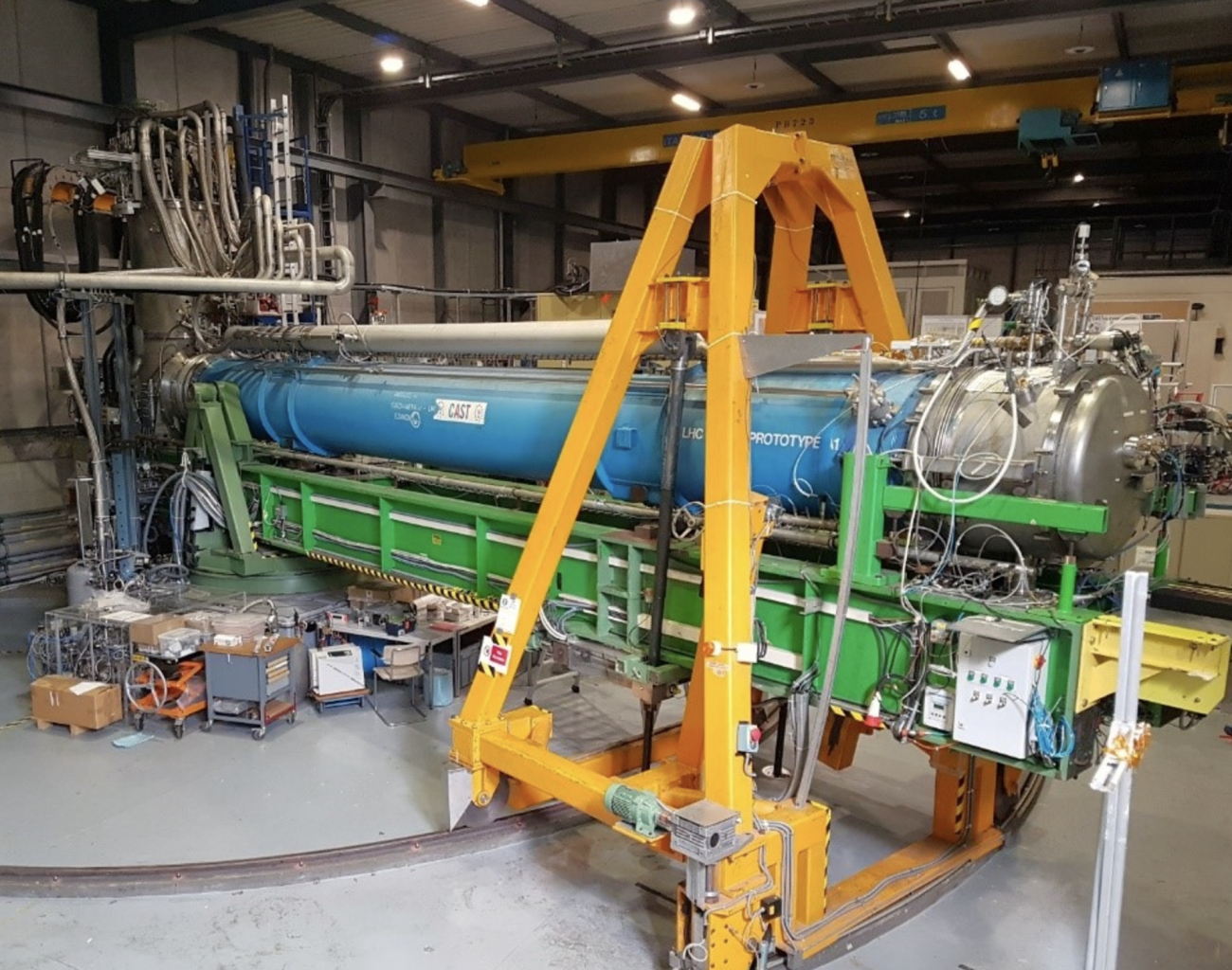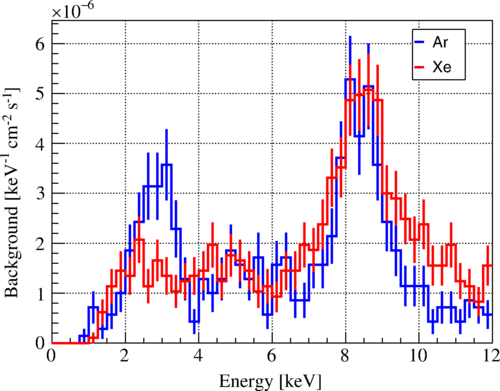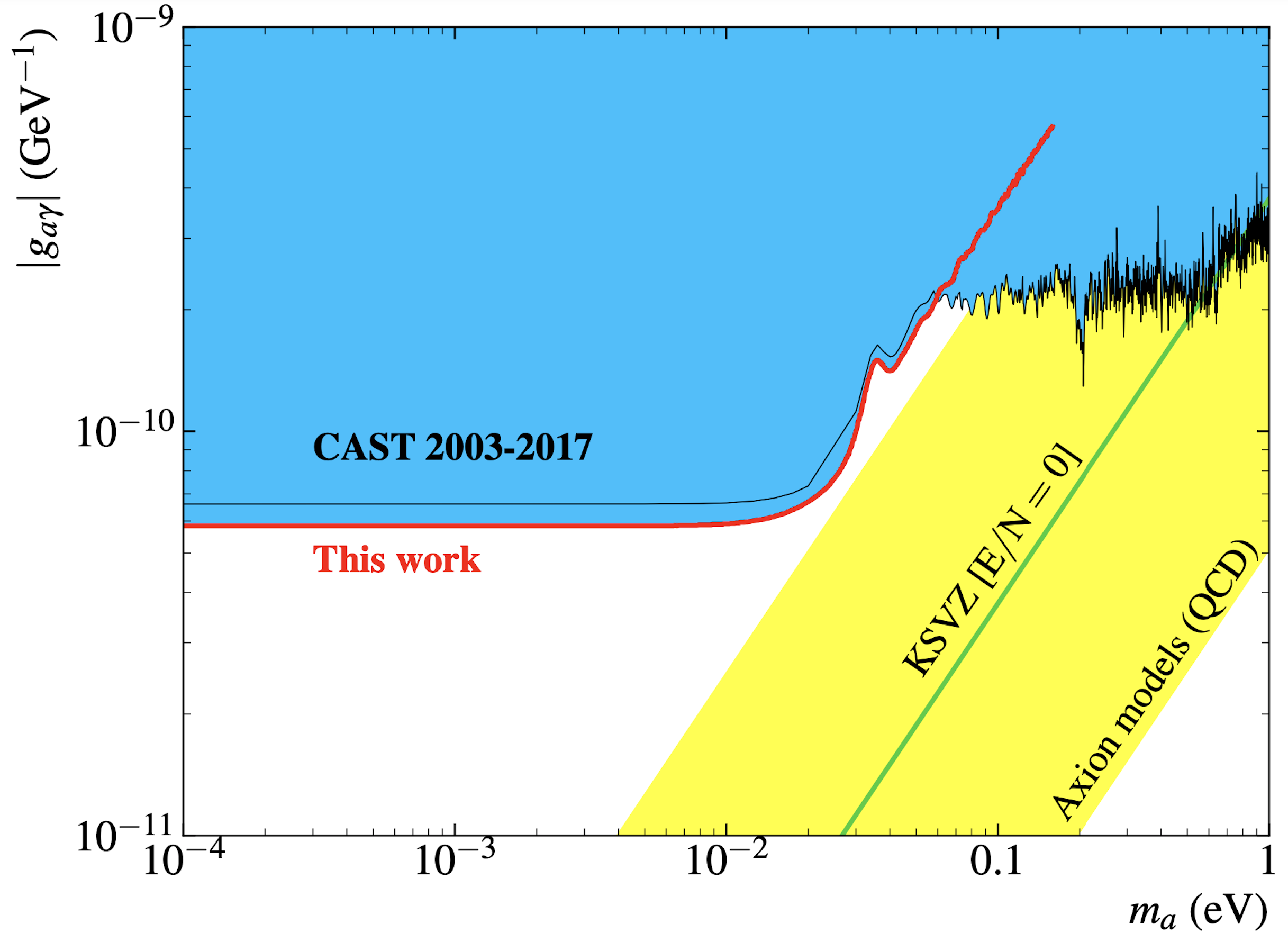CAST Sets New Benchmarks in the Quest for Axions

Within the CERN Axion Solar Telescope (CAST) collaboration, scientists from the Center for Astroparticles and High-Energy Physics (CAPA) at the University of Zaragoza led the research that has achieved a significant milestone in the search for axion-like particles (ALPs). Published in Physical Review Letters, their latest results establish the most stringent limits yet on the interaction between ALPs and photons, pushing the boundaries of particle physics and cosmology.
Axions, proposed in the late 1970s, are hypothetical particles that could resolve the strong CP problem in quantum chromodynamics (QCD) and serve as prime candidates for dark matter—the elusive substance constituting about 85% of the universe's matter. Detecting axions or constraining their properties has profound implications for our understanding of fundamental physics and the cosmos.
At the heart of this achievement is the CAST helioscope, which ingeniously repurposes a decommissioned prototype magnet from the Large Hadron Collider (LHC). The magnet, 9.26 meters in length and capable of generating a magnetic field of up to 9 Tesla, serves as a powerful tool for converting solar axions into detectable X-ray photons via the Primakoff effect. With two 4.3 cm diameter cold bores, detectors can be installed on both the sunrise and sunset sides, allowing CAST to track the Sun for a total of three hours each day.
Advanced Detection with Microbulk Micromegas Technology
For the latest data-taking campaign between September 2019 and June 2021, a single ultralow-background microbulk Micromegas detector was installed on the sunrise side of the experiment. This state-of-the-art detector, constructed from electroformed copper and Kapton, features a 3 cm drift distance and an X-ray transparent 4 μm aluminized Mylar window acting as the cathode. The anode consists of a high-granularity 6 × 6 cm stripped readout with 120 × 120 strips at a 0.5 mm pitch. The detector's design facilitates precise event localization and energy measurement, critical for distinguishing potential axion signals from background noise.
Active and passive shielding systems enhance the detector's performance. A plastic scintillator above the detector serves as an active shield by identifying and rejecting cosmic muons through coincidence detection. Surrounding the detector, a lead box with walls 10 to 15 cm thick acts as a passive shield against environmental gamma radiation.
Transition to Xenon-Based Gas Mixtures
Historically, CAST employed argon-based gas mixtures in the Micromegas chamber due to their well-understood properties and ease of use. However, argon's X-ray fluorescence around 3 keV contributes to background noise precisely where the expected solar axion signal is maximal. To address this, the collaboration transitioned to xenon-based gas mixtures during the latest campaign.
"Switching to xenon not only improved our detection efficiency but also reduced background levels in the critical energy range," explains Cristina Margalejo, a predoctoral researcher at CAPA. "This shift required the development of a sophisticated gas recirculation system to maintain gas purity, incorporating moisture and oxygen filters, a recirculation pump, and a buffer volume."
The xenon-based mixture used was composed of 48.85% xenon, 48.85% neon, and 2.3% isobutane at 1.05 bar. Compared to the argon mixture, this allowed operation at lower pressures, reducing the pressure difference between the vacuum pipe and the gas volume. Consequently, thinner windows with higher X-ray transparency could be utilized, enhancing the overall detection efficiency.
Additionally, the latest experimental setup incorporates advanced X-ray optics specifically optimized for axion detection, further enhancing the signal-to-noise ratio in the detector's energy range of interest. This telescope employs a 30º segment of a 13-layer Wolter I type optic with a focal length of 1500 mm, designed to maximize throughput around ~3 keV, the energy region where the solar axion signal is expected to peak. This innovation significantly contributes to the overall sensitivity of the CAST helioscope, complementing the improvements achieved through the use of xenon-based gas mixtures.
Comprehensive Calibration and Rigorous Data Analysis
The calibration of the detector was meticulous and multifaceted. The team performed calibrations at multiple energies, ranging from 1.5, 2.1, 3.0, 4.5, 5.9, up to 8.0 keV, using the CAST X-ray tube with interchangeable targets, providing a detailed understanding of the detector's response across the energy spectrum. Daily calibrations with a 5.9 keV 55Fe source ensured ongoing stability and performance monitoring.
Alignment and pointing accuracy were verified through several methods. An X-ray generator emitting ~3 keV photons was placed opposite the magnet to confirm beamline alignment, and the Sun was imaged twice yearly using an optical telescope and camera attached to the magnet.

Figure 1: Energy distribution of background counts for both argon and xenon datasets. The absence of the ~3 keV argon fluorescence peak in the xenon data is evident, highlighting the reduced background and improved signal-to-noise ratio in the critical energy region.
Data were collected in three datasets, encompassing both argon and xenon mixtures. The datasets included both axion-sensitive tracking periods and background measurements, totalling 314.6 hours of tracking exposure and over 6,200 hours of background data. Advanced data analysis techniques were applied using the REST-for-physics framework, which enabled effective event discrimination based on energy and topological observables.
Setting New Limits on Axion-Photon Coupling
Through these efforts, the CAST collaboration established a new upper limit on the axion-photon coupling constant of gaγ < 5.8 × 10−11 GeV−1 for axion masses up to 0.02 eV. This result surpasses previous experimental bounds and even challenges constraints derived from astrophysical observations, such as those from horizontal branch stars and globular clusters.
"Our findings are visualized in an exclusion plot, mapping the parameter space where axions could exist," says Dr. Jaime Ruz, an expert in X-ray optics at CAPA. "We've achieved sensitivity unparalleled by any other experiment, edging closer to a promising region predicted by theoretical models."

Figure 2. The parameter space for axions and ALPs, showing the latest constraints on gaγ, includes a red line marking the exclusion region established by this work, improving upon the previous limit shown in black, while the yellow band highlights the region suggested by QCD axion models.
Implications and Future Prospects
The technical advancements and operational experience gained from CAST are instrumental for the forthcoming International Axion Observatory (IAXO), currently under construction at DESY in Germany. Led by Dr. Igor G. Irastorza from the University of Zaragoza, IAXO aims to achieve a sensitivity far surpassing that of CAST.
"The improvements in detector technology, gas handling systems, and data analysis techniques are directly feeding into IAXO's design," notes Dr. Irastorza. "Our success with xenon-based gas mixtures and ultralow-background detectors paves the way for even more sensitive searches for axions."
The CAST collaboration's latest results represent a significant stride in the quest to detect axion-like particles. By implementing innovative detection technologies, transitioning to xenon-based gas mixtures, and employing rigorous calibration and analysis methods, the team has set new standards in experimental sensitivity.
Given that CAST concluded operations in 2021, these findings stand as a lasting legacy, advancing our understanding of axions and their potential role in the universe's fundamental makeup. The scientific community eagerly anticipates the contributions of IAXO, which will build upon CAST's foundation to explore uncharted territories in axion research.
For those interested in delving deeper into CAST's findings, the full publication is available in Physical Review Letters. The paper offers comprehensive insights into the experimental setup, calibration procedures, data analysis techniques, and the broader implications of the results, along with detailed figures illustrating the exclusion limits and other key outcomes.
